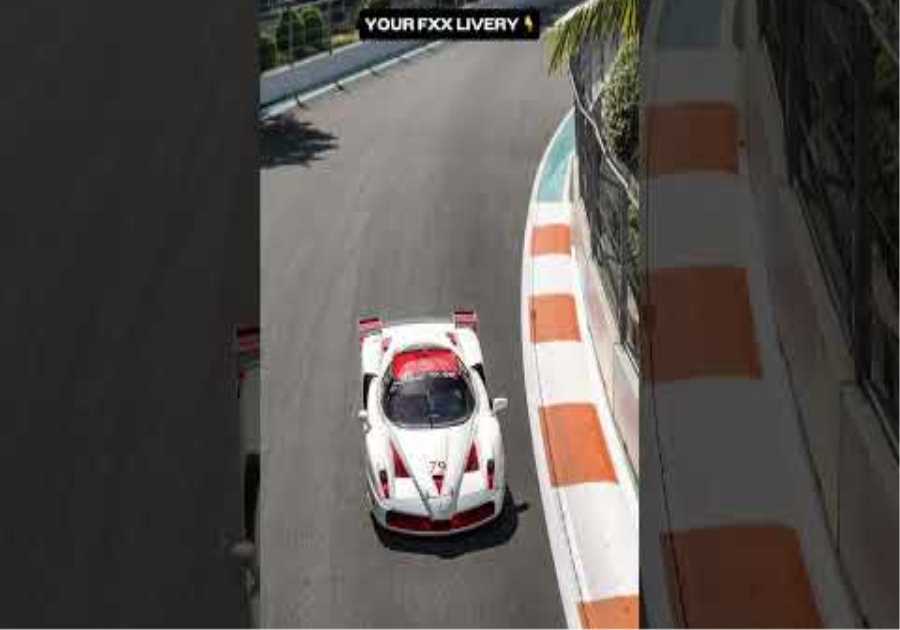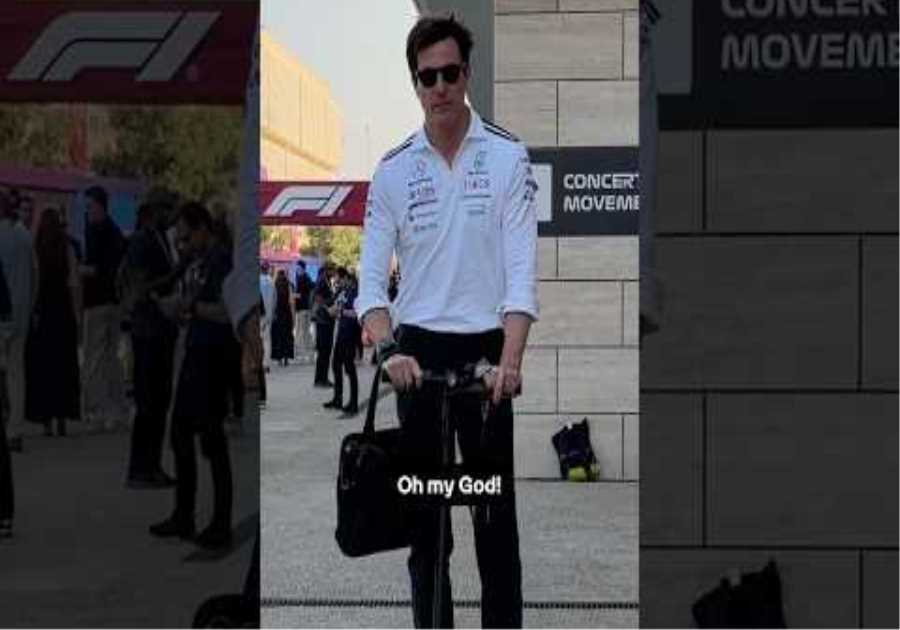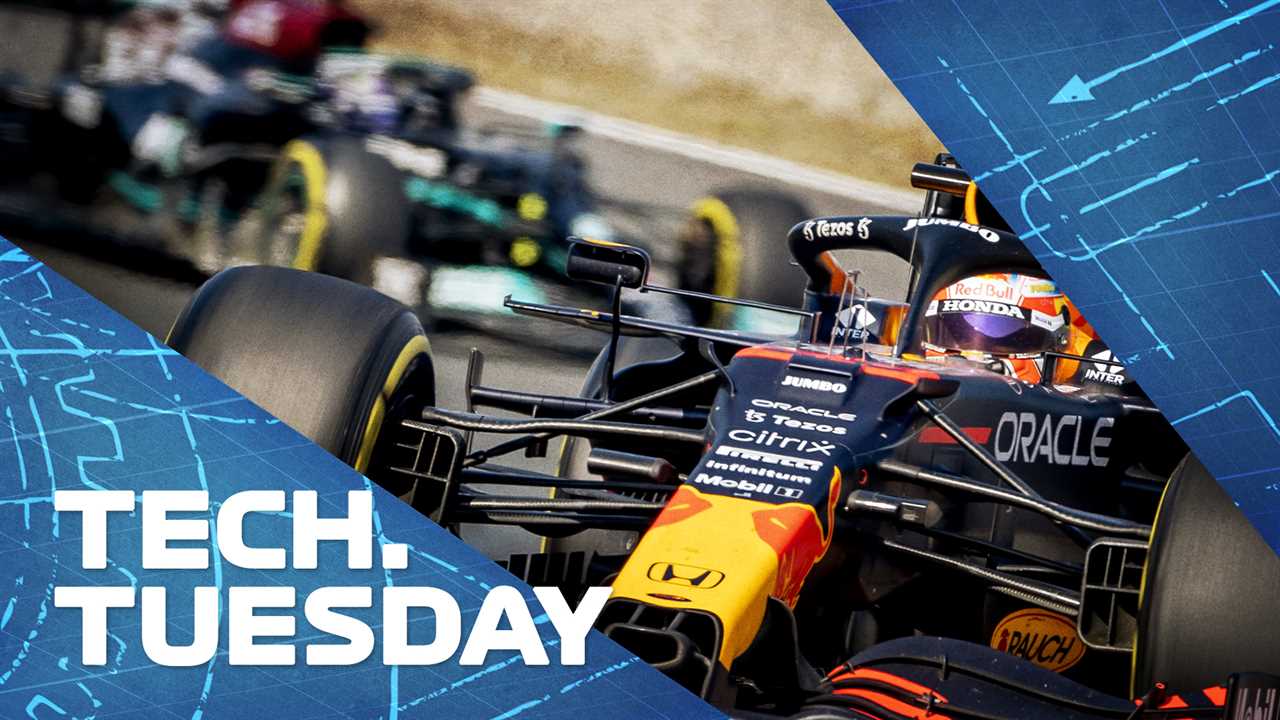
F1 technical expert Mark Hughes looks ahead to next week’s Mexican Grand Prix with technical illustrations by Giorgio Piola.
The technical aspects of the race in Mexico City at an altitude of 2,200 meters – by far the highest of the season – always have a profound impact on the performance of the cars.
But in this season’s epic title duel, it will probably also have a say in which Red Bull or Mercedes car is actually the fastest and will therefore have a decisive role in how the dynamics of this competition will develop in the remaining five races.
READ MORE: How Red Bull implemented their aggressive strategy to win in Austin – and where was Mercedes’ FP1 pace going?
The characteristics of the two cars differ greatly in terms of both drive and aerodynamics. The unique conditions of the Mexican circuit – the air of Mexico City has about 25% less oxygen than the air at sea level – will likely reward or punish it differently.
Mexico City lies at an altitude of 2,250 meters above sea level – the highest of all the race tracks on the F1 calendar
Engine
Without exception, Mercedes has a power disadvantage in Mexico. Why should that be the case with the by far dominant engine of the hybrid era?
With 25% less oxygen content, the air is of course less flammable. Theoretically, however, a turbocharger compensates for this by rotating faster – as it encounters less resistance – and thereby compressing the air more. The air compressed by the turbo should therefore have approximately the same oxygen content as normal.
Power struggle: How Honda caught up with Mercedes – and how the Silver Arrows fought back
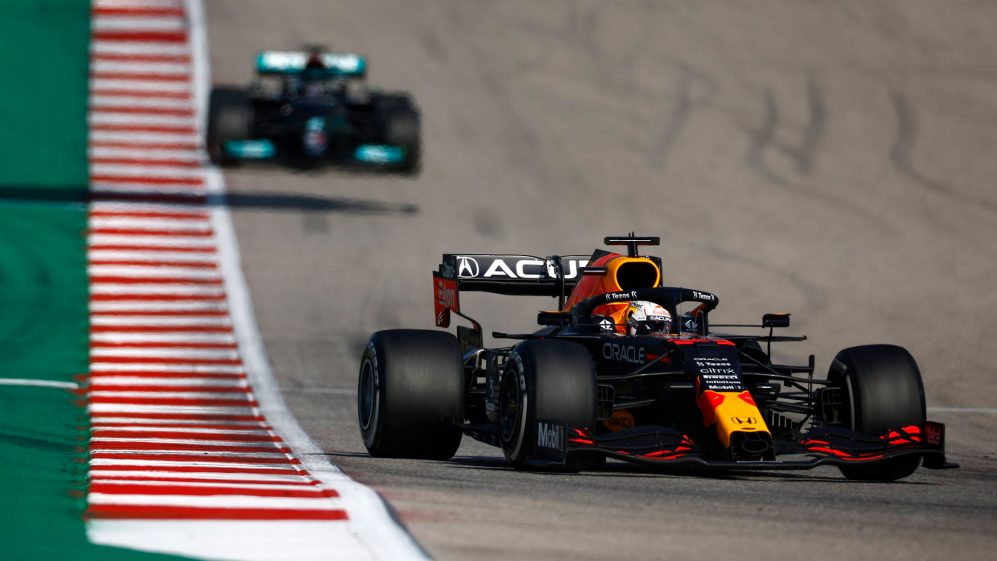
High altitude affects the turbo performance, especially in the unit
But it is actually more complex than that. The speeds of the F1 turbo shafts are regulated to a maximum of 125,000 rpm. At lower altitudes they tend not to run as fast, but this limit is the limit for the turbo’s ability to compensate for the thinner air.
Since the ERS-H can turn up the turbo electrically to negate the lag, the single turbo required in the regulations tend to be as large as the energy efficiency of the system can justify. But the bigger the turbo, the more heat is generated at a given speed.
READ MORE: Honda Reveals “Latest Big Development” for Powerplant As They Go All Out To Beat Mercedes In F1 Last Year
The thinner air in Mexico ensures a correspondingly lower cooling effect and so the Mercedes turbo tends, while it tries to compensate for the lower oxygen content of the air, to a greater temperature rise when revving up than in competing engines. If it gets too hot, it won’t achieve its boost goals.
So Mercedes traditionally has a power disadvantage here. Historically, whether Renault or Honda, Red Bull has been far more competitive here in terms of performance than any other venue during the season.

A diagram of the Honda RA621H powerplant, courtesy of Honda Racing
Downforce & drag
The thinner air creates a lower pressure difference between the environment and the air that flows over the fenders and the underbody of the vehicle. So all cars in Mexico generate less downforce – much less. Even with full Monaco-style wing levels, they have less downforce than at Monza, where they ride the thinnest wings of the season.
The Red Bull RB16B with its high-rake design is known to have a higher upper output limit than the Mercedes W12 with lower rake.
READ MORE: Is Mercedes’ improved straight-ahead speed due to some clever ride height techniques?
With a smaller than usual difference in downforce between the two cars, you’d think this would help Mercedes. But the air resistance associated with the downforce must also be taken into account. The air resistance is also greatly reduced by the thinner air. So the compromise between downforce and drag is in a completely different place than usual.
Charging the car with as much downforce as possible involves less drag loss than usual, helping any car that normally has a less efficient compromise. That car would be the Red Bull, with a high-rake aero concept that is inherently less aerodynamically efficient in that compromise. This is less important in Mexico than in most other venues.
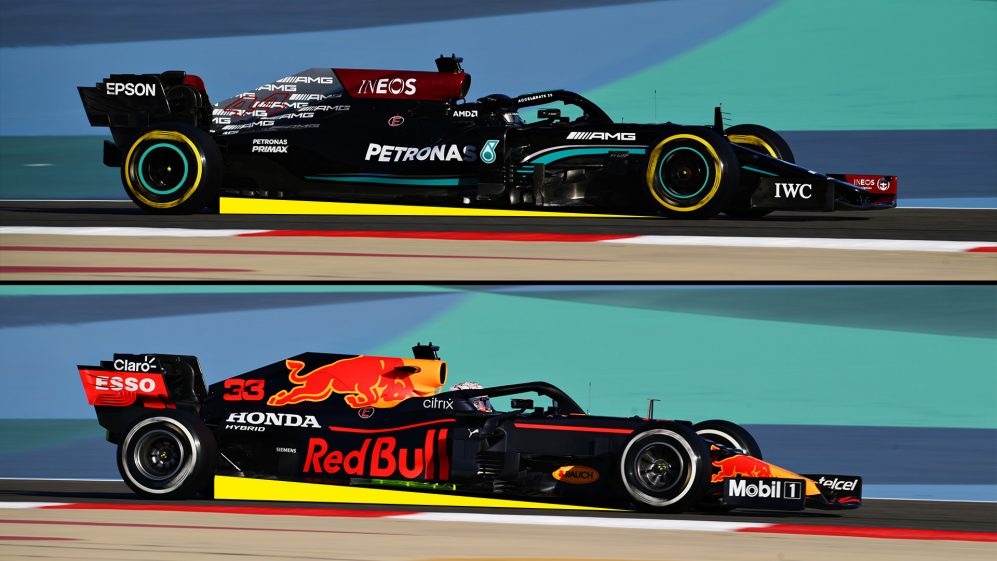
The low-rake Mercedes W12 (above) compared to the high-rake Red Bull RB16B (below)
Tires & Brakes
Since the thin air has less cooling capacity, it is a great challenge to keep the tires and especially the brakes at an optimal temperature.
Historically, Mercedes have been more marginal than other cars when it comes to brake cooling, relying on drivers to control temperatures so the front brake ducts can be optimized for the ultimate aerodynamic performance.
READ MORE: Why Air Is Mexico’s Most Challenging Challenge (2019)
Red Bull’s brake duct design is relatively simple – but it may also allow greater cooling capacity in Mexico’s thin air.
A comparison of the Red Bull’s much simpler brake ducts with those of the Mercedes (in the gallery above) suggests that they have greater cooling capacity. The Red Bull normally drives with its enclosing aerodynamic “cake pan” drum fairing partially open, in contrast to the Mercedes. It will be interesting to see if that changes in Mexico.
There are always unforeseen, aggravating factors when it comes to determining which of the two contending cars does better than the other in a given location. But Red Bull’s confidence and Mercedes’ caution coming into the Mexican weekend are very evident.
The post TECH TUESDAY: High commitment at great heights – Will Mexico City be a “Red Bull route” again this year? first appeared on monter-une-startup.



